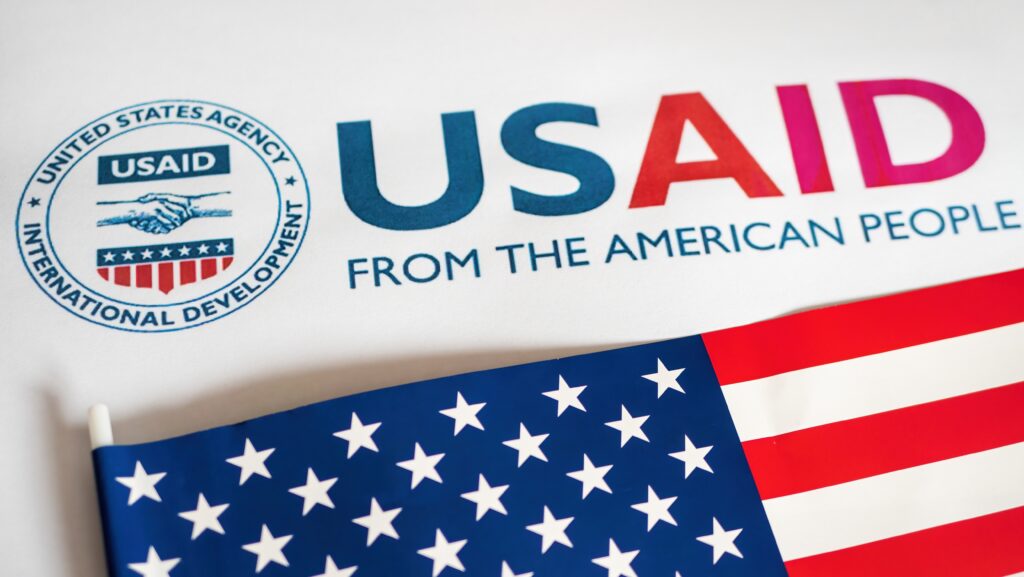After the devastating earthquake in Myanmar, China has swiftly stepped in to lead international relief efforts, providing vital aid and filling the leadership vacuum left by the United States. Once a cornerstone of global disaster response, the U.S. is now notably absent, with the near-total dismantling of USAID (United States Agency for International Development) under former President Donald Trump and Secretary of State Marco Rubio. This drastic shift has left the U.S. with only a minor role in the ongoing relief efforts.
USAID’s Collapse and the Dismantling of U.S. Presence
On the same day that the earthquake struck Myanmar, the U.S. State Department informed Congress that it would eliminate nearly all remaining USAID positions. From a workforce of 10,000, only about 15 staff members will remain by September. This move is part of a larger effort to scale back global operations, with most functions absorbed by the State Department. A recent federal court ruling has paved the way for even deeper cuts, further weakening the U.S.’s ability to respond to international crises effectively.
The U.S. Commitment vs. Action
Although Washington has insisted that it remains committed to providing aid, few resources have actually reached the ground. Key contracts covering logistics, transport, and emergency supplies have been terminated, halting crucial operations that are needed to save lives. Humanitarian partners have had their payments frozen, meaning services such as providing clean water and delivering medical aid have ground to a halt.
Jeremy Konyndyk, a former USAID official and now head of Refugees International, condemned the U.S.’s actions, calling it a “complete abandonment of U.S. leadership in global crisis response.” He emphasized that the U.S. no longer has the capacity to respond effectively to crises, citing the shrinking of the USAID workforce and the termination of essential aid services.
Healthcare Network Crumbles
In Myanmar, the collapse of USAID’s presence has been particularly devastating. In 2023, the agency provided over $240 million in aid to Myanmar, nearly one-third of all international support for the country. However, in the wake of the USAID cuts, this figure has drastically reduced. Only three out of 18 ongoing projects remain, and seven hospitals previously funded by U.S. aid have been forced to close. In one refugee camp in Thailand, which houses over 30,000 people, there isn’t a single doctor left to provide medical care.
UN Special Rapporteur Tom Andrews has harshly criticized the U.S. withdrawal, calling it “cruel and unnecessary.” He pointed out that patients with chronic illnesses are now going without treatment, and children with disabilities are being cut off from care. As Myanmar continues to reel from the earthquake’s devastation, the U.S. is leaving an even deeper humanitarian crisis in its wake.
China Takes the Lead
As the U.S. pulls back, China has quickly stepped up to fill the gap, asserting its role in the region with both humanitarian and strategic intentions. Beijing’s actions have sent a strong signal to the international community: in Southeast Asia’s time of need, China is present, while the U.S. has faltered.
China’s involvement in Myanmar and its neighboring countries is part of its broader effort to enhance its influence across the region. Beijing’s swift and visible actions have positioned it as a key player in the region’s crisis response. While its motives are partly strategic, especially given the growing competition between the U.S. and China in the Indo-Pacific, China’s aid has been welcomed by many affected communities who are still reeling from the earthquake’s impact.
The U.S. Steps Back, But What’s Next?
As China expands its reach in Southeast Asia, the U.S. faces growing criticism over its diminished presence. The collapse of USAID has left the U.S. ill-equipped to respond to humanitarian emergencies on a global scale. For many in the international community, the absence of the U.S. in Myanmar underscores the retreat of American leadership in crisis response. Meanwhile, China’s proactive approach to providing aid is shaping the future of international disaster relief.
The U.S. government has yet to respond to the sharp criticism surrounding its scaled-back foreign aid operations. However, with the loss of key programs and the dismantling of USAID, the U.S. risks losing its standing as a global leader in disaster relief. The international community is left to grapple with the reality of a U.S. that is increasingly absent from humanitarian crises, while countries like China rise to fill the gap.
A Changing Global Landscape
As Myanmar and other countries continue to face the aftermath of disasters, the global humanitarian landscape is changing. The U.S.’s retreat from international disaster response has left a significant void, one that China is eager to fill. Whether the U.S. can rebuild its capacity to respond to future crises will determine its role in global leadership for years to come. However, the immediate absence of the U.S. in critical moments, like the Myanmar earthquake, is a stark reminder of the shifting dynamics in global disaster relief efforts.


